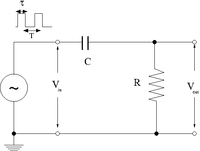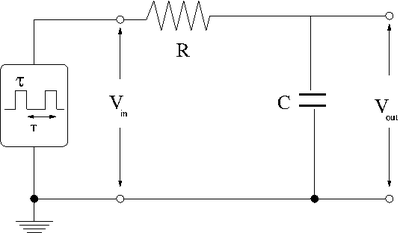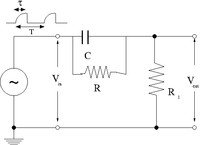Difference between revisions of "Lab 6 TF EIM"
Jump to navigation
Jump to search
| Line 27: | Line 27: | ||
=Integrator= | =Integrator= | ||
| − | + | Now repeat the above experiment with the resistor and capacitor swapped to form the low pass circuit below. | |
[[File:TF_EIM_PulsedRCLowpass.png | 400 px]] | [[File:TF_EIM_PulsedRCLowpass.png | 400 px]] | ||
Revision as of 03:57, 9 February 2011
Lab 6 Pulses and RC Filters
Differentiator
1.) Adjust the pulse generator to output square pulses which at sec in time. 2.)Construct the circuit below selecting an RC combination such that RC 1/10
3.)Measure and . Sketch a picture comparing and .
4.) Change the pulse width such that
5.)Measure and .Sketch a picture comparing and .
6.) Change the pulse width such that
7.)Measure .Sketch a picture comparing and .
Questions
1.) What happens if than amplitude of is doubled.
2.) What happens if R is doubled and C is halved?
Integrator
Now repeat the above experiment with the resistor and capacitor swapped to form the low pass circuit below.


